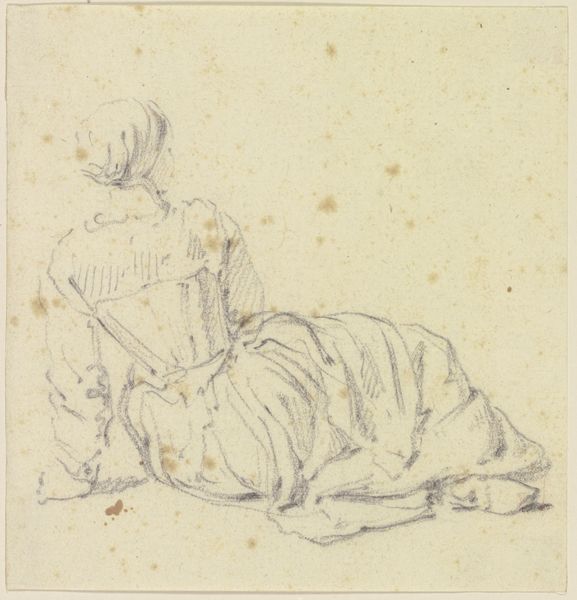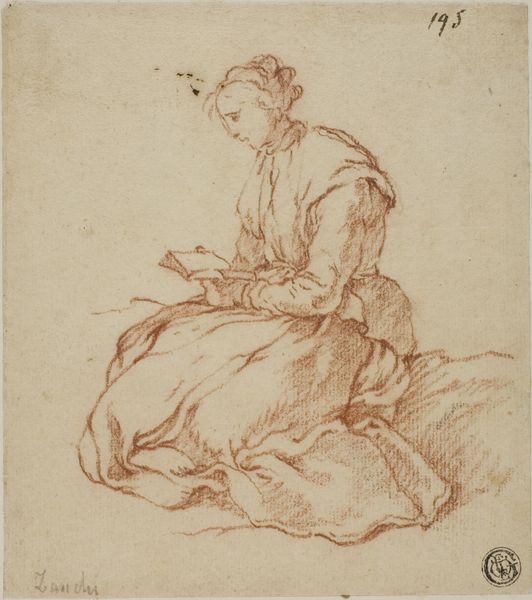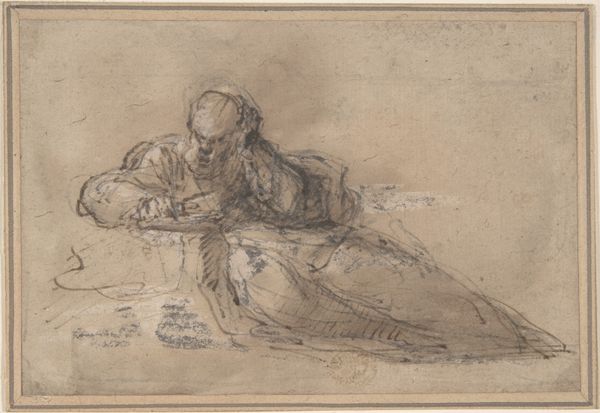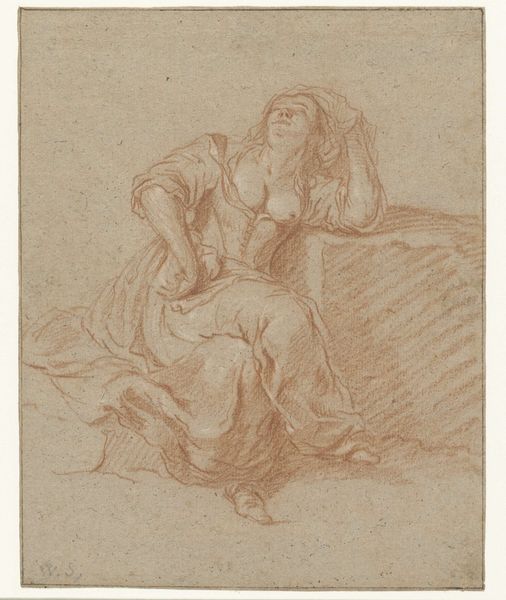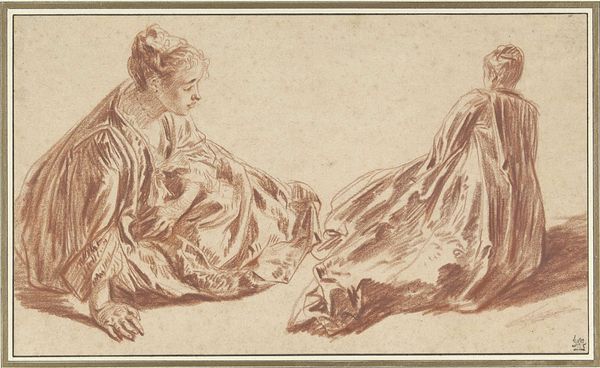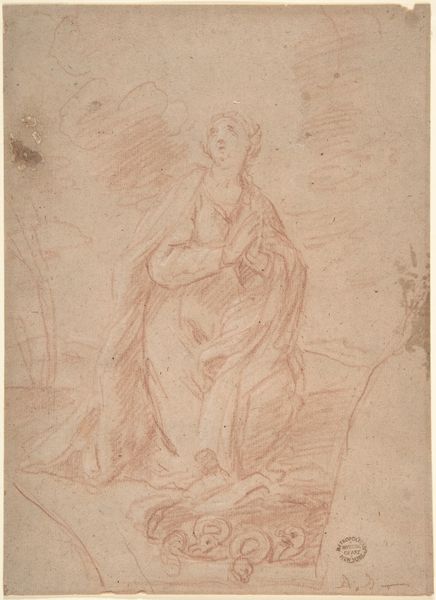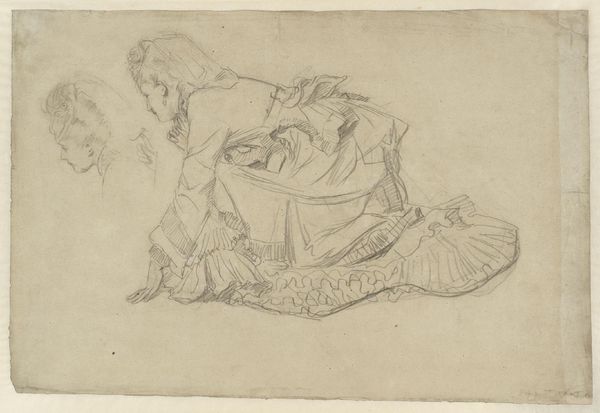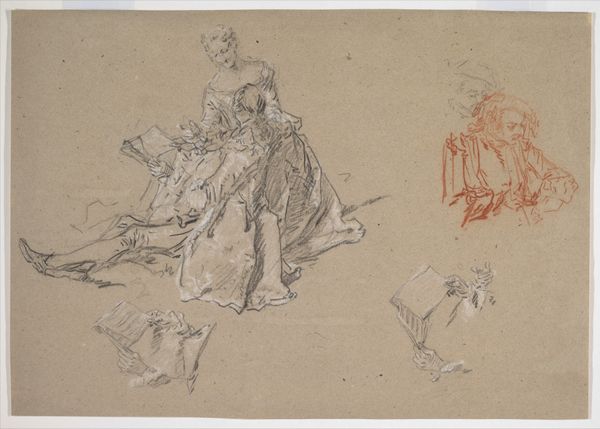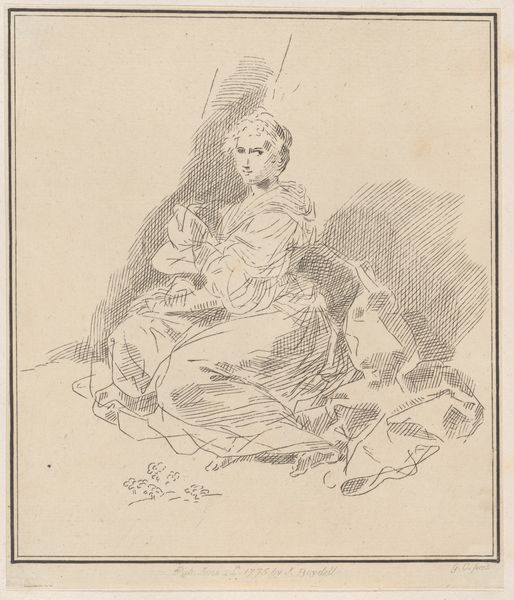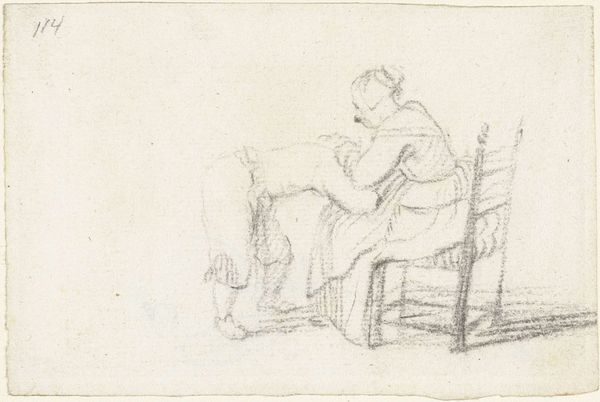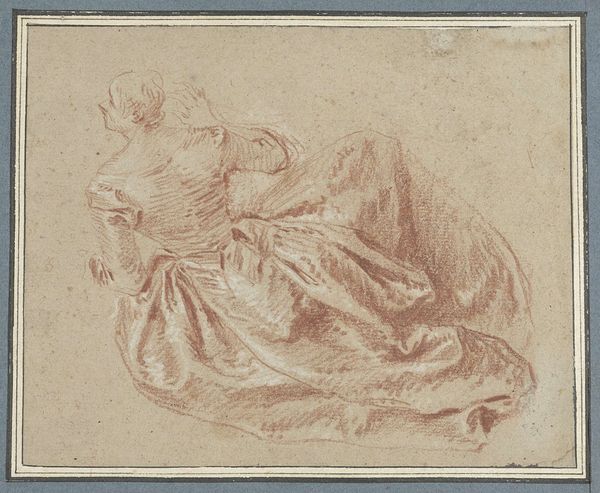
drawing, print, paper, pencil
#
portrait
#
drawing
# print
#
figuration
#
paper
#
pencil
#
rococo
Dimensions: 5 1/2 x 6 15/16 in. (14 x 17.7 cm)
Copyright: Public Domain
Editor: Here we have Nicolas Lancret’s "Woman Seated on the Ground," made sometime between 1705 and 1743, rendered in pencil on paper. It's a simple drawing, but I'm drawn to the textures in her dress, even though it's just pencil. What can you tell us about the way this piece was made and why it matters? Curator: Let's consider the economics of leisure represented here. Lancret utilizes readily available and affordable materials like pencil and paper. How does this choice of humble materials inform the way we see this upper-class subject and her leisure? Editor: So, the *means* of production impacts the final reception? Is it a statement by Lancret on class, maybe? Curator: Possibly, but consider too the implications of this as a study. The artist isn't crafting a permanent, monumental artwork, but engaging in a process of observation. Pencil allowed for corrections and variations – a fluidity crucial for capturing a fleeting moment of leisure. Is this woman really at leisure, or is her posture of servitude a clue that suggests work involved in that “leisure?" Editor: So, the drawing itself becomes a commodity in a way, tied to labor in its production, but also depicting possible labor. It really complicates the image of carefree ease I initially perceived. Curator: Precisely. This work encourages us to unpack the social dynamics encoded in both the depicted scene *and* the production of the image itself, blurring boundaries between high art and everyday practice through readily available, humble materials. Editor: That makes me consider the kind of paper available then. Was it mass-produced or handmade? Would that affect the cost, the value, of the piece? Thank you, this has really expanded my thinking on this deceptively simple drawing. Curator: Indeed. Always look closely at what materials and processes are employed in making the art, and ask how those affect your perception. It challenges a purely aesthetic or intellectual interpretation, and asks who can access art, both to make and consume it.
Comments
No comments
Be the first to comment and join the conversation on the ultimate creative platform.
